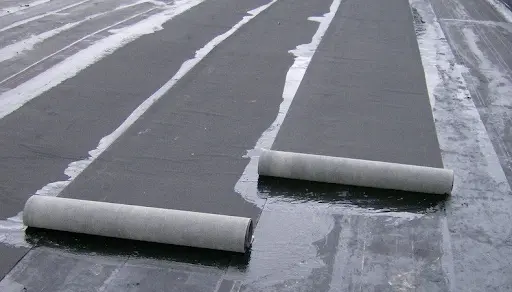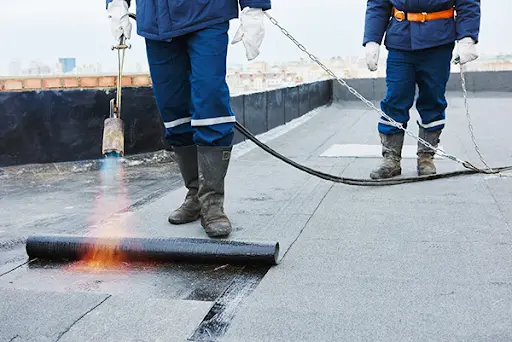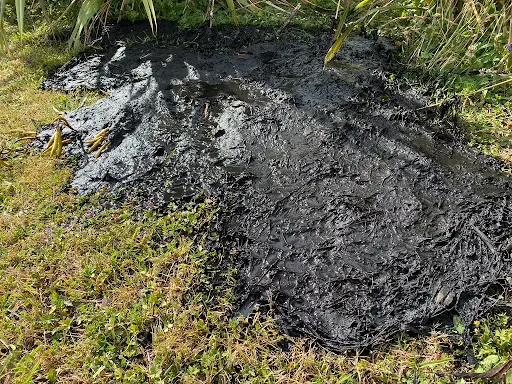This is a tricky question and not easy to answer. How big is the risk drinking water of roof collected rainwater? At Aqua Works we have been dealing with the problems and impacts of asphalt shingle and bitumen based roofing membranes for 20 years. The following assessment is based on our experience.
Read more >>
The risk for your drinking water of roof collected rainwater
There are homeowners who experience severe health problems AFTER installing a petroleum-based product as a roof used to collect rainwater. In this way, we want to draw attention to some of the effects our customers are experiencing, having harvested water intended for Potable use, through the use of these asphalt or bitumen roofing products.


Regulations for NZ Drinking Water Standards and Building Codes
Since 2015 main suppliers of asphalt shingles have proven that their products are safe for potable use on rainwater collection and have met the NZ Drinking Water Standards and also the relevant Building Codes. Primarily code AS/NZS 4020. Why do we regularly receive calls from customers with an asphalt or bitumen roof having problems with the taste, colour and smell of their drinking water? Especially when these problems show up quite differently in other water tanks with different roofs who live in the same neighbourhood. It’s worth noting there are likely many hundreds of homes clad in asphalt shingle that don’t have their roofing tiles passed the AS/NZS 4020 code as they were built prior to 2015.
The risk for your dinking water of asphalt roof on a new residential building
We first came into contact with this issue in 2009 when we were asked to consult a property that had major problems with the asphalt roof of a newly finished residential building. The family of four all got giardia and other E. Coli-related sickness and suffered from some other, non-related symptoms. In the case of Giardia and E Coli contaminated drinking water, there is no connection with the asphalt on the roof. This is more likely due to impurities on the roof like bird poo, insects or rodents. But there was a likelihood that the chemical reactions of the family could be traced back to the roofing material.
Stan Abbott of Massey University investigated this situation. He concluded that the roof was the cause of the yellowish smelly water which was also suspected of releasing hydrocarbons (PAHs Polycyclic Aromatic Hydrocarbons) from the asphalt shingles. The solution was Ultrafiltration or UV and high volume backwash-able carbon systems to remove the hydrocarbons, colour and odour.

Asphalt and bitumen roofing as a health risk for drinking water
Since 2009 Aqua Works has been addressing the problems likely resulting from bitumen on the roof and the associated health risk to drinking water. We offer UV systems and large automatic backwash carbon filtration systems installed to specifically address the colour, taste and odour issues. They can be so bad that drinking and bathing are intolerable.

Our experience in applying these products results from customers calling us and complaining about the quality of their drinking water, which is usually yellow and smells terrible. We have installed multiple large carbon filters on roofs with asphalt shingles, all displaying the same symptoms. After filtration, the water produced is clean, clear and free of colour, odour and hydrocarbons.
Polycyclic Aromatic Hydrocarbons (PAH) release from asphalt shingles into your drinking water
The release of polycyclic aromatic hydrocarbons (PAHs) occurs naturally over the lifespan of asphalt shingles. The predominantly neutral, non-polar solids are only very slightly soluble in water. Since rainwater is slightly acidic, it actively attracts other molecules. It means that since water molecules have a positive and a negative side, any other atom with a positive or negative charge can combine. Thus, the collected water from the roof serves almost exclusively as a carrier. The PAH can then epoxidice (oxidise to epoxides) when metabolised in the body. The epoxides can react with human DNA in a nucleophilic ring-opening reaction.
Solutions to remove toxic PAH from your drinking water
If you have an asphalt or bitumen roof and a rainwater harvesting system, your drinking water may be contaminated with harmful PAHs. A sure sign of this can be seen on site in your homes when the water is yellowish and smelly. It is easy to notice when you run a bath, for example. After installing an Aqua Works whole house water filtration system, your drinking water will be clear, odour free and tasty.
- Ultrafiltration or UV sterilisation – recommended for any rainwater collection source
- Large whole house Aqua Works Auto Carbon filtration – with a specific blend of carbon
- Pre Tank Filtration – physical filter before the water enters the tank
- First flush diverters
If you have more questions, call Steve and his team of Aqua Works at 0212 787 427 to arrange a free on-site appraisal at your place. This is always the best place to start.
Read more
E.J. Mirjam Blokker, Bianca M. van de Ven, Cindy M. de Jongh, and P.G.G. (Nellie) Slaats. Health Implications of PAH Release from Coated Cast Iron Drinking Water Distribution Systems in the Netherlands. Environ Health Perspect. 2013 May; 121(5): 600–606. Published online 2013 Feb 19. doi: 10.1289/ehp.1205220
Ministry of Business, Innovation and Employment (2015). Regarding the code-compliance of asphalt roof shingles to roofs where the rainwater is harvested and used as potable water. Retrieved 2.5.2021 from https://www.building.govt.nz/assets/Uploads/resolving-problems/determinations/2015/2015-056.pdf

